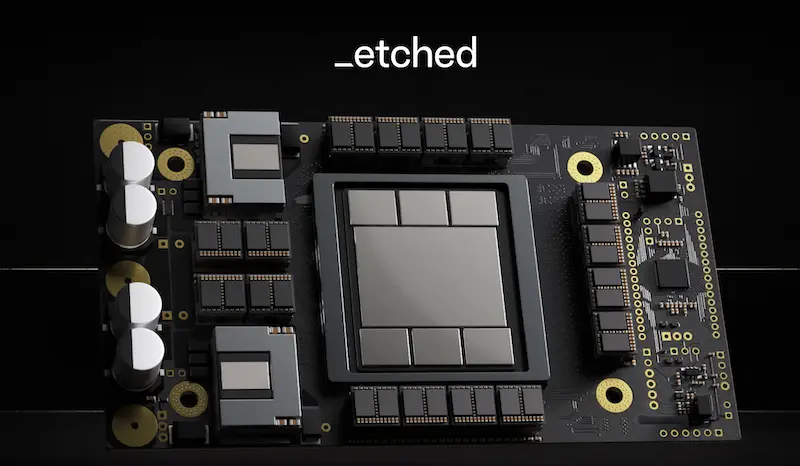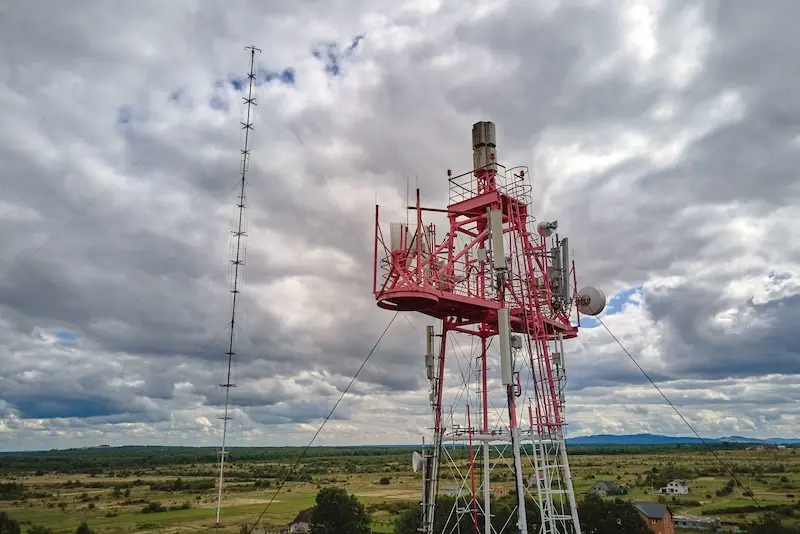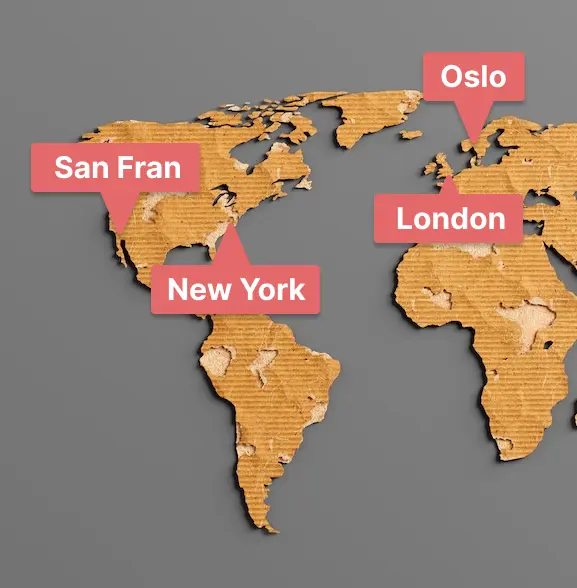2024 Technology Predictions
Be ahead of the compeition
Our 2024 technology pridictions
2024 Opportunities and Developments
Making Tech Predictions is always fun and it effects how many of us work and view the world. I've written down here a list of 2024 predictions and their potential business opportunities for 2024.
Let's start with the big one!

LLM speific hardware - etched.ai
Advances in AI and Machine Learning
We can already see the limitations of LLMs approaching the horizon, this amazing technology has helped our coders gain efficiently in development and our graphic designers create concepts faster.
There are companies like etched.ai trying to dramatically decrease the cost/price ratio for for the use of LLMs making them viable for many quick business enhancements.
Healthcare is also seeing improvements with accuracy on disease & cancer detection by analyzing medical images.
I hope we see real time patient warnings in 2024, AI integrated into mechanical devices.
In the world of customer service ChatBots are increasingly becoming more useful then ever, private LLMs (like our PolyDGPT) help companies scan their documentation, code and other tools to give customers and staff increased performance and satisfaction.
There are a vast range of opportunities here, given that AGI doesn't sink the global economy and we still have jobs. LLMs are a far-cry from AGI, so no worries yet!

A robot handshake
Robotics
The advancement of robotics technology opens up a multitude of business prospects in diverse sectors. This is already evident; for example, in Norway, the company Avismo has established completely automated vertical farms using robotics. It's intriguing to consider how AI might further enhance robotics, leading towards an ideal scenario where local economies are fully automated through robotic assistance. Here are some potential opportunities that could arise from this development.
As technology advances, there's growing potential for robotics in healthcare. This includes surgical robots, rehabilitation robots, and those designed for elderly care. Companies can focus on developing sophisticated, yet user-friendly robots to assist in complex surgeries, physiotherapy, or even daily care for the elderly or disabled. This already has some use-case examples in Japan.
The agricultural sector can greatly benefit from robotics, especially in precision farming just like our friends Avismo. Robotics are being used for tasks such as planting, harvesting, and crop monitoring. Businesses are developing drones for aerial surveys or ground-based robots for weed control and harvesting, helping to increase efficiency and reduce labor costs. This technology gets more feasable for a greater range of busineses every year.
While robotics has already made significant inroads in manufacturing, the future holds even more potential. With the advancement of AI and machine learning, robots can be more autonomous and adaptable. Businesses can invest in developing or improving robotic assembly lines, quality control systems, and material handling robots.
In retail, robots can be used for inventory management, customer service, and logistics. In logistics and supply chain management, robotics can revolutionize the way goods are sorted, packed, and shipped. E-commerce giants are already investing heavily in this area, but there's room for new players, especially in developing custom solutions for smaller businesses.
As household robots become more sophisticated, there's potential for growth in this market. Robots can be developed for cleaning, security, or even as personal assistants. There's also a market for educational robots that can aid in learning and development for children.
Robots can be deployed in hazardous environments, such as disaster sites or areas with extreme pollution, where it's unsafe for humans. Businesses could focus on creating robots that can handle tasks like search and rescue operations, environmental monitoring, or cleaning up hazardous waste.
Similar to Software as a Service (SaaS), Robotics as a Service can be a lucrative business model. Companies can offer robotics solutions on a subscription basis, providing maintenance, updates, and support. This model makes advanced robotics more accessible to smaller businesses and individuals.
Custom Robotics Solutions: There's a growing demand for custom robotics solutions in various niche markets. Companies that can offer tailored robotics solutions for specific industry needs, like bespoke manufacturing processes or unique service requirements, will find a ready market.
Robotics Education and Training: As the demand for robotics skills increases, so does the need for education and training in this field. Companies can offer courses, certifications, and hands-on training for individuals looking to enter or advance in the robotics field.
Robotics Software Development: The software that powers robots is as important as the hardware. There's a vast opportunity in developing intuitive, intelligent software that can make robots more efficient, autonomous, and user-friendly.

6G is it even worth looking at?
Emergence of 6G
Despite the hype surrounding 5G, its impact has been more evolutionary than revolutionary, particularly in terms of solving latency issues. The premise is that closer antenna stations are required to solve this, which in many cases makes WiFi a more practical solution, highlights the limitations of current cellular technology in addressing latency.
With 6G, while theoretical improvements in speed and latency are anticipated, the practical implementation could face similar challenges. The potential lies in hyper-localized solutions, like enhanced local hosting and caching for cloud services, providing faster/cheaper access to data with reduced latency.
The expectation that 6G will make autonomous vehicles safer primarily applies to city environments, where dense networks can potentially facilitate better vehicle communication. However, in rural or less developed areas, the benefits might be limited, given the infrastructure requirements.
The introduction of Apple's AR and other AR/VR technologies could lead to new forms of communication, akin to the widespread adoption of FaceTime. Real-time AR-based interactions, enhanced by faster network speeds, could become more commonplace, offering novel ways to connect and engage. It's still going to cut off when you go under a tunnel though. :-D
The promises of revolutionizing industries like mining, healthcare, and manufacturing through remote operations with 5G have not fully materialized, casting skepticism on similar expectations from 6G.
The expectation that 5G, and by extension 6G, would significantly improve connectivity in rural and remote areas has been met with skepticism. The economic and logistical challenges of deploying advanced network infrastructure in these areas remain a significant hurdle.
Future strategies may need to focus on a combination of technologies, possibly including satellite internet, to address the connectivity gap in these regions.

The quantum world is strange, sideways and up/down around!
Progress in Quantum Computing
The media really hypes quantum computing, but really it's use case is very specific. Here are some potential benefits incoming.
Quantum computers can significantly speed up the process of simulating molecular interactions, leading to faster development of new medications.
They can also provide more accurate and detailed climate modeling, aiding in better preparation for natural disasters.
Drug Discovery
Established pharmaceutical companies and biotech firms can look for partnerships or collaborations with tech companies specializing in quantum computing. These partnerships can accelerate drug development, leading to new revenue streams from groundbreaking medications.
Businesses can explore niche markets that may emerge from new drugs developed through quantum computing.
This includes personalized medicine, where treatments are tailored to individual genetic profiles.
Enhanced Weather Forecasting
Companies that operate in weather-sensitive sectors like agriculture, transportation, and event planning can leverage advanced forecasting to optimize their operations, reduce risks, and improve profitability.
Think APIs for agro systems, or data analytics services, climate change adaption strategies and systems, out door activity companies.

We created a few AR and VR applications, excited for improvements in 2024
Opportunities in Growth in Augmented Reality (AR) and Virtual Reality (VR)
Retailers can use AR and VR to create virtual showrooms where customers can try on clothes or view products in a 3D space, enhancing the online shopping experience.
If Apple AR replaces the desktop monitor or RayBan AR integrates a solution that doesn’t kill people's eyes, then we might see a second phase of startups and business opportunities.
Below many of these opportunities exist, but they become more valuable with better technology.
Retail and E-Commerce Innovations in AR/VR
Retailers can use AR and VR to create virtual showrooms where customers can try on clothes or view products in a 3D space, enhancing the online shopping experience. Businesses can develop AR applications that allow customers to visualize products in their own space before purchasing, like furniture or home decor.
Training and Education
The best way to learn is to be in the environment right? VR can be used for hands-on training simulations in fields like medicine, engineering, and aviation, offering a safe and controlled environment for practical learning.
Healthcare and Therapeutics
AR and VR can provide medical professionals with realistic training environments, allowing them to practice surgeries and diagnostic procedures without risk to patients. VR can be used for therapeutic purposes, such as treating phobias, PTSD, or rehabilitation exercises, offering new avenues in mental health and physical therapy.
Real Estate and Architecture
Real estate companies can use VR to offer virtual tours of properties, allowing potential buyers to explore homes remotely. Get ready to be outbid by more foreign investors! Architects and builders can use AR and VR to visualize buildings and interior designs, facilitating better planning and client presentations. It's a big step-up from Virtual Home in the 90s.
Entertainment and Media
The gaming industry can exploit VR to create fully immersive gaming experiences. Similarly, media companies can produce VR films and experiences for a new genre of entertainment. There are already some great games like Mount and Blade, Rick and Morty.
Manufacturing and Design
AR and VR can streamline the product design process by allowing designers to create and test prototypes in a virtual environment. VR can assist in training workers for complex manufacturing tasks, while AR can aid in maintenance by overlaying instructions and information onto the real work environment.

If only
What would be nice, but probably won't hit next year?
True Convergence of Devices
The idea of having a single device that can function as a smartphone, desktop, laptop, and perhaps even as a tablet is highly appealing. This device would ideally adapt its interface and functionality based on how and where it's being used (e.g., docking to a monitor and keyboard for desktop use, or expanding its screen for tablet-like interactions).
While some attempts have been made in this direction (like smartphones that can be docked to use as a basic desktop), achieving full convergence with seamless performance and user experience across all modes remains a complex challenge. It involves not just hardware design but also software adaptability and integration.
Unfortunately, even though this is better for the consumer and the environment, Apple and Google won't allow this type of technology to cut into their iPad, Laptop and Desktop profit margins.
Fully Autonomous Vehicles
In the US alone over 46,000 people die every year on the roads. 1.35 million people are killed on roadways around the world!
The widespread adoption of fully autonomous vehicles (Level 5 autonomy, where no human intervention is required) is a much-anticipated development. These vehicles would transform transportation, offering increased safety, efficiency, and convenience.
Despite ongoing progress, achieving full autonomy poses significant technical, regulatory, and infrastructural challenges.
It's likely that we'll continue to see gradual improvements and limited deployments rather than a complete shift to fully autonomous vehicles by next year.
Whaky idea: Open source government white label and accountability system
Keep dreaming
Thanks for reading, if you have anything to add or need help with new opportunities, please call us using the button below!

Call us
Click to call us directly